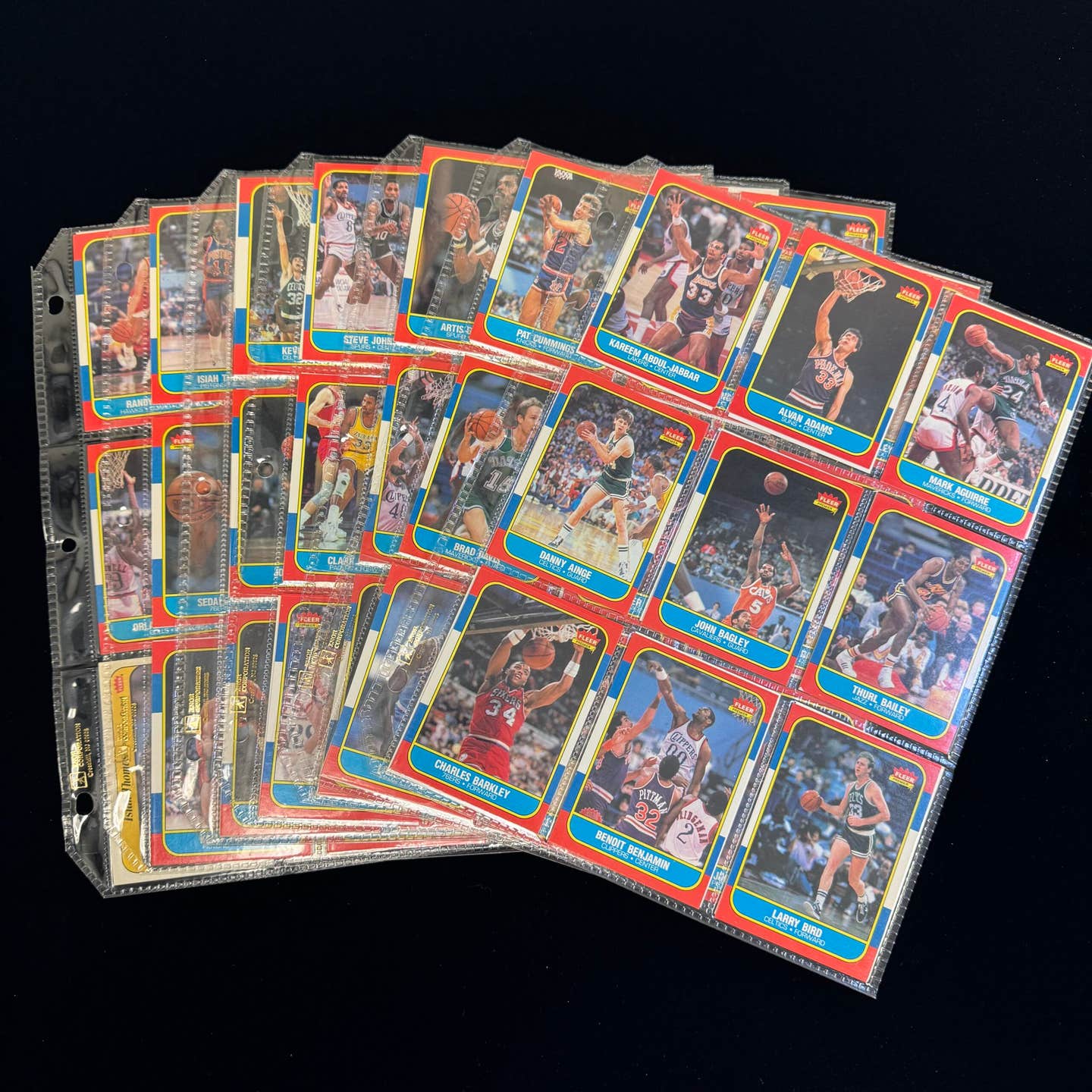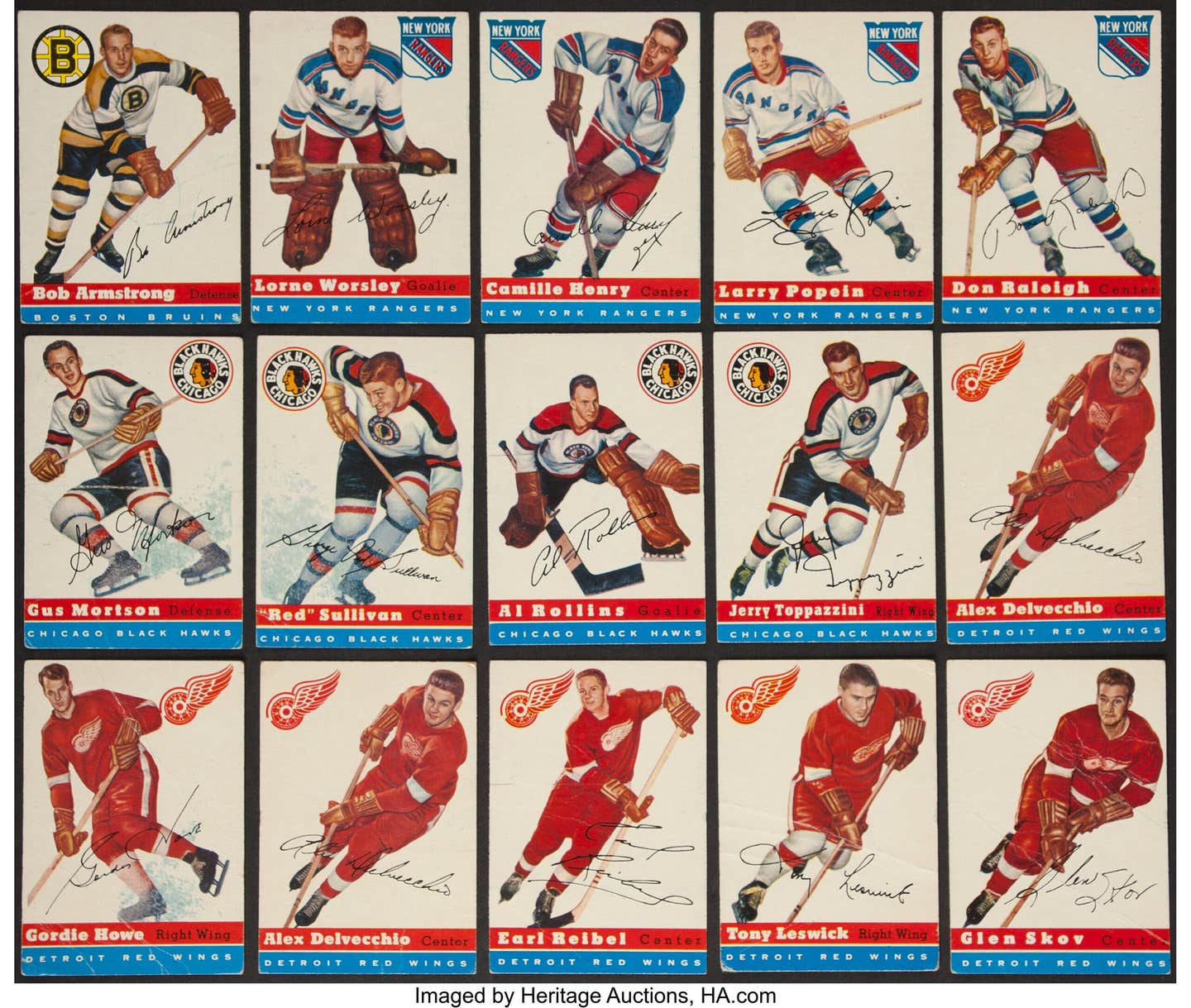Page
Classic Card Sets: 1959 Fleer Ted Williams
The Life of Ted Williams Set is Now a Half-Century Old
by T.S. O'Connell
There have been a number of instances where individual players ended up with their own card set devoted exclusively to them, and every last one of them owes a proper genuflection to the one that started it all a full half-century ago: 1959 Fleer Life of Ted Williams.
It may not have been great shakes at the time, since anteing up a nickle for a pack of odd-looking cards devoted solely to one player – even a player as legendary as Teddy Ballgame – was a bit problematic for a 9-year-old with but a handful of nickles earmarked for baseball cards. My solution at the time was to restrict my 1959 Fleer Ted Williams purchases to a 1-cent vending machine at the local grocery store. A penny wasn’t quite the bit of superfluous nonsense that it is today – especially since a mere handful of those would be enough to buy a pack of Topps – but it was still modest enough that I ended up with a few of the 1959 Fleer cards. Besides, I don’t even remember if the 5-cent Fleer wax packs were available where I lived in Muskegon, Mich., hardly a “Baahhston” suburb.
In truth, I think the now highly-coveted issue has had a better run in the organized hobby than it did with national distribution at its year of issue. Intended as a way for Fleer to get its foot in the door with a national baseball release, the issue – almost entirely colorized black-and-white photographs – would gain its greatest notoriety from a single card that ended up being pulled off the presses and incredibly rare. Ultimately, its an 80-card set that – like its famous predecessors from 1909-11 T206 or the 1933 Goudey issue – is often sold as a complete set with that one missing soldier.
The remaining 79 cards that typically comprise a “full” set are nice enough cards, probably a lot more popular with adult hobbyists generations later than they were at the time. For those able to rustle up the temerity to criticize the issue, the principal argument is that all those photos of Ted hunting, fishing or climbing into fighter jets somehow were unworthy; certainly for a legion of baby boomers, finding career-contemporary cards of Ted Williams doing anything whatsoever is just peachy, thank you very much.
Bill Szczepanek, creator of a truly impressive website (www.goldenagebaseballcards.com) that features, among many other issues, the 1959 Fleer set, figures he wasn’t your typical youngster when it came to that particular offering. “My fascination with this set in 1959 was somewhat different than most kids. I did not have friends who had an interest in these cards, but I liked to read about players and had books on playing baseball by people like Bob Feller,” the avid collector noted in his blog.
"The cards included aspects of Williams’ early life, his military career, his fishing achievements, his baseball achievements and tips on how to hit. It was the tips that attracted me to the cards,” he continued. “At the time the cards dealing with his military exploits as a Marine Corps pilot did not much interest me, though now they add a lot to the story of his life and his bravery as a man.”
Now, on the 50th anniversary of the issue, it still represents a genuinely challenging but relatively affordable quest for serious collectors, with high-grade unslabbed complete sets (sans No. 68) can sell for $2,000-$5,000 or more, and collector grade sets all the way down to several hundred dollars.
Leaving No. 68 aside for the moment, most of the rest of the cards list in the Standard Catalog of Baseball Cards for about $15 each or slightly less (unslabbed), but a number of them can jump well beyond that if they picture another player (Babe Ruth, Jimmie Foxx, Eddie Collins) or icon from another sport (Jim Thorpe, Sam Snead). Those kinds of cards and a handful of others – some of the more popular cards where Williams offers batting tips – can set you back $30-$50 or more, and virtually all of the cards jump dramatically in high-grade third-party slabs.
And, of course, the first and last cards in the issue are pricey because if ever there were an issue where youngsters maintained the cards in numerical order, this was probably it. For many years in the 1960s and 1970s, the whole set – minus No. 68 – could be had for a couple of bucks and might even have been a thrown-in on a more substantial order of other vintage cards. As late as 1980, the set could be found offered for $4, though like so many advertisements of the period, it might not be immediately clear what condition it was in.
And you did end up one card short, which was a point of some aggravation for serious collectors.
Ted Signs for 1959
It’s one of those hoary old stories that have circulated through the hobby for decades: Topps had Ted Williams under exclusive contract starting in 1954, but the great sluggers was approached by Fleer after the 1958 season with a contract that called for an unprecedented $5,000 per year for four years. For the youth of America and serious hobbyists later on, it would mean no Ted Williams Topps cards for his final two years as a major leaguer, an indignity neatly addressed by enterprising graphic designers like Keith Conforti, who has produced ersatz versions of Ted’s cards from the missing years.
It seems almost comical now to consider it, but with Ted’s exclusive rights safely tucked away, Fleer would later run into a snag with card No. 68. “Ted Signs for 1959” showing Williams signing his contract for that season alongside Boston GM Bucky Harris who, it turns out, was still under contract with Topps.
Whether the story is apocryphal or not, there’s no disputing that the card is scarce. And when something is that scarce and that important, you know what happens next.
In mid-July of 1974, with a new all-time home run champion recently crowned and the Oakland A’s en route to a “Threepeat” a couple of decades before anybody mustered up the chutzpah to try to get the word trademarked, the hobby was abuzz with news from the Midwest. At the Fifth Annual Midwest Sports Collectors Convention in Troy, Mich., a fella walked into the room with a reported 300 of the No. 68 “Ted Signs” cards.
Remember, this was about the time that the mainstream media was starting to latch itself onto stories about “Cardboard Gold” and “Treasure in the Attic.” The big boom hadn’t occurred yet, so even the much sought-after No. 68 was probably only worth about $10 or so. But at that price it was enough to inspire one of the early counterfeiters.
The Fleers (it was and remains today a quaint marker of the times that many collectors added a plural “s” to the company name) were offered in 50-count bricks to several different dealers at the show, and the debate was on.
Ultimately, the folks from “Fleers” were even contacted in trying to determine the authenticity of the cards, but Irv Lerner, a veteran dealer even then and still today 35 years later, ended up blowing the whistle on the scam and laboring furiously to get the word out in the hobby for collectors to be aware of the fakes. Many of them wound up with a “counterfeit” prominently stamped on the back and made their way into the hobby in that fashion.
At the time, the 300 cards might have been worth $3,000; nowadays, assuming they were in Near-Mint or better condition, it would be several hundred thousand dollars.
A Fleers story with a happy ending
Fast forward three decades to a Robert Edward Auction in 2005. A 1959 Fleer Life of Ted Williams set sold for $12,760, which sounds like a lot but upon closer examination seems like a bargain: all 80 cards are signed by Teddy Ballgame. The whole set, including No. 68, in this instance the ironically titled “Ted Signs” card. And as you might expect, there’s one of the hobby’s all-time great stories to go with it.
Bill Hongach is a well-known hobby name from the 1980s who was the force behind the Renata Galasso Inc. empire, which billed itself as the world’s largest hobby card dealer. In 1972, he was the Yankees batboy for the visiting team. The following story was told to me many years ago, but I’ll rely on Rob Lifson’s auction description from his 2005 catalog:
During the first day of the series between the Yankees and the Senators, the batboy brought in a hardcover book written by Ted Williams to get signed by the Texas manager. Williams said he had not seen that book in years and nearly begged for the book to give to a friend. The batboy told the manager to take it as a gift. Ted’s reply was he would only accept if he could return the favor, and declared that the next day he would sign whatever the batboy brought in to be signed.
The next day, Williams was sitting in the middle of the clubhouse signing some baseballs at a table. The batboy mustered up the courage to approach Ted about signing his items and Ted, in his loud commanding voice said, “Sure, bring them over here!” It was clear the skipper thought it would be only a couple of items.
The batboy first gave Williams a nice blue ballpoint pen (because Ted most often signed things with a Flair pen and very often on the back of the cards), and then instructed the manager in the middle of the small clubhouse to sign the cards on the front, not the back.
Then ... all 80 cards were put in front of Williams. Most of the players and coaches knew before “the presentation” to the Skipper the number of cards that would be placed before him to sign, and were eagerly anticipating his reaction. The room was so silent you could hear a pin drop. Ted saw the stack of cards before him and looked up at the batboy. Before Ted could say a word, the batboy most sincerely thanked Ted for being so kind and generous for volunteering to sign whatever he brought in. Ted didn’t know what to say.
He began signing the cards one by one. After a dozen cards, Ted began to speak his mind in short, clipped, partial sentences, in a loud, controlled, mock-angry voice that could be heard throughout the clubhouse, “I’m never going to ...” And then he would stop speaking as he signed the next card, before continuing with his protest, “...promise that batboy...”
As he finished signing each card, he very deliberately put the just signed card on a pile with the other already signed cards, and with great effort placed another card in front of himself to sign, continuing with his protest. He intermittently stopped speaking as he signed, and then return to complaining loudly as he moved cards around, until all 80 cards had been signed. The clubhouse roared with laughter over and over. The rare and extended clubhouse signing session concluded with Ted announcing something along the lines of, “Don’t bring me another copy of that book I wrote – I don’t want to make any more promises.”
All 80 cards are signed by Ted Williams and all of the signatures grade a virtually unimprovable “10.” Eighty-five percent of the cards grade Ex to Ex-Mt and 15 percent grade Vg-Ex (due to slight surface wrinkles). Very close examination of rare card No. 68 reveals that this card was carefully hand cut from an uncut sheet.
It’s hard not to imagine that Ted Williams would be entertained by the retelling of that story even more than we would.








